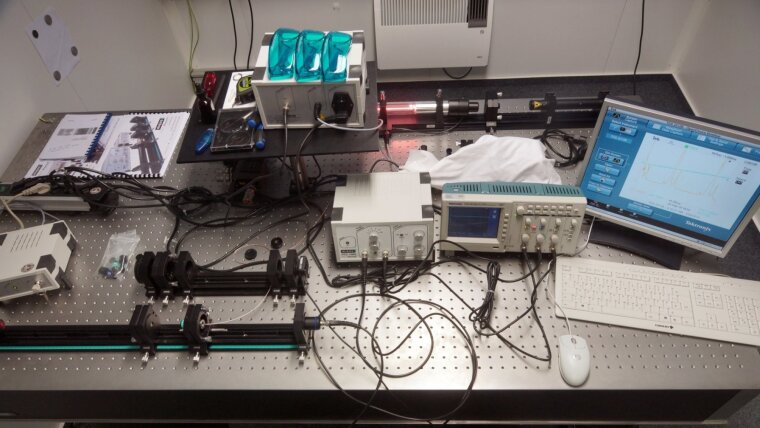
The Fabry-Perot interferometer was invented in 1897 by Charles Fabry and Alfred Perot. In contrast to other, more conventional types like the Michelson or Mach-Zehnder interferometer, the Fabry-Perot arrangement acts as an optical resonator that may result in an extremely high spectral resolving power. In this way, state-of-the-art Fabry-Perot cavities may exceed the resolution of classical diffraction gratings by a factor of 100 and provide an irreplaceable tool, in particular for studies of the hyperfine structure in atomic spectra.
Fabry-Perot cavities make use of curved and plane mirrors depending on their field of application. Whereas spherical mirrors are commonly employed for confocal schemes, the very basics of optical resonators are better studied by means of elementary plane surface reflections.
Further content and detailed descriptions are available to enrolled students via the course's page at the Moodle website of the Friedrich Schiller University Jena.